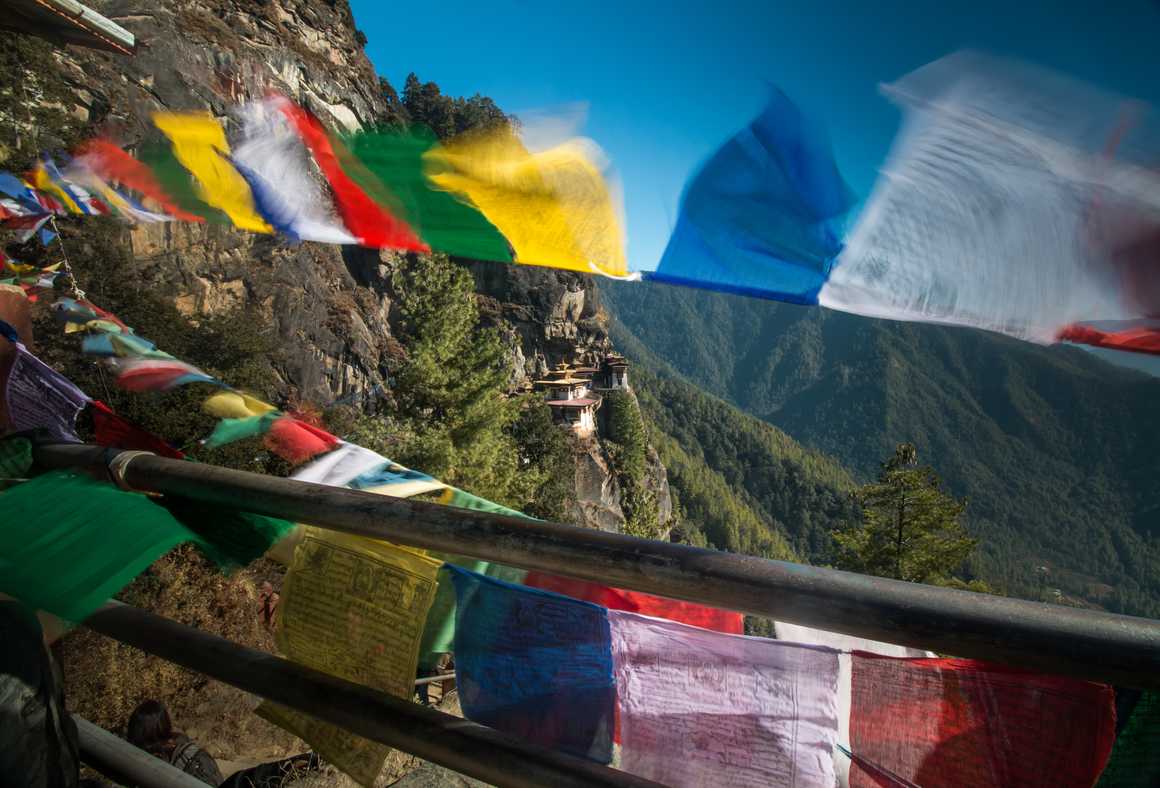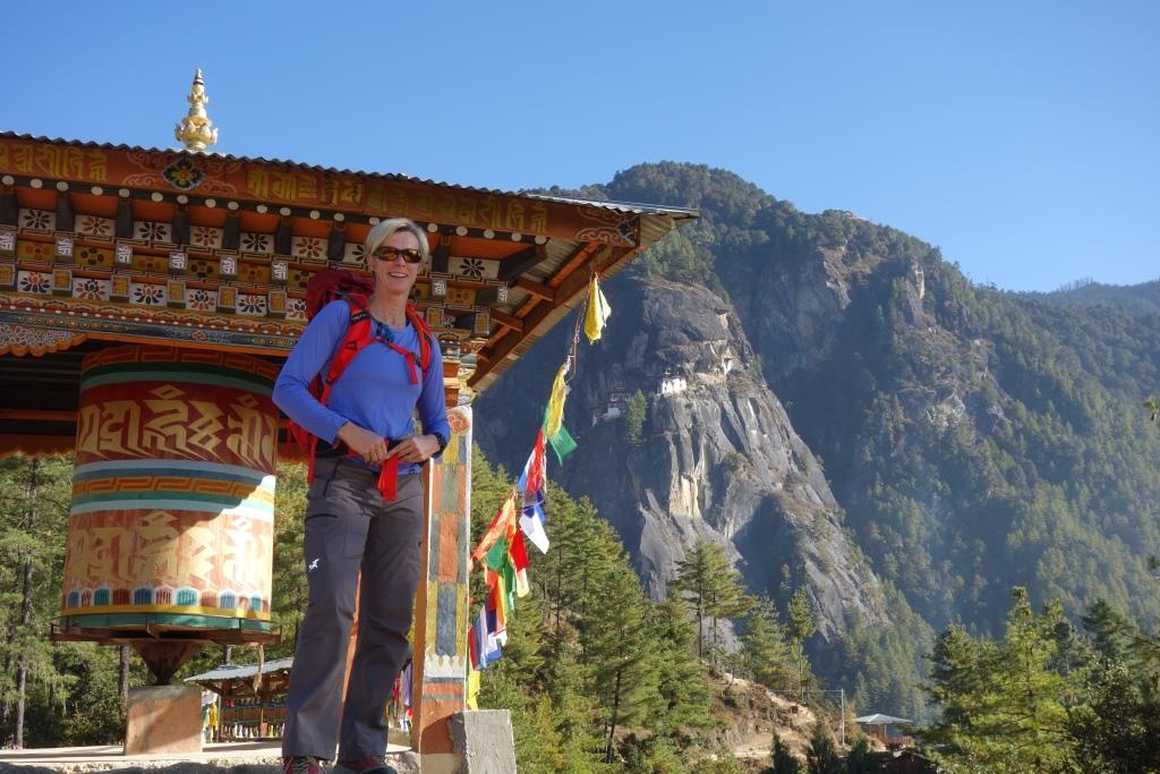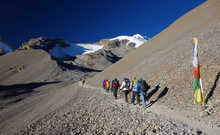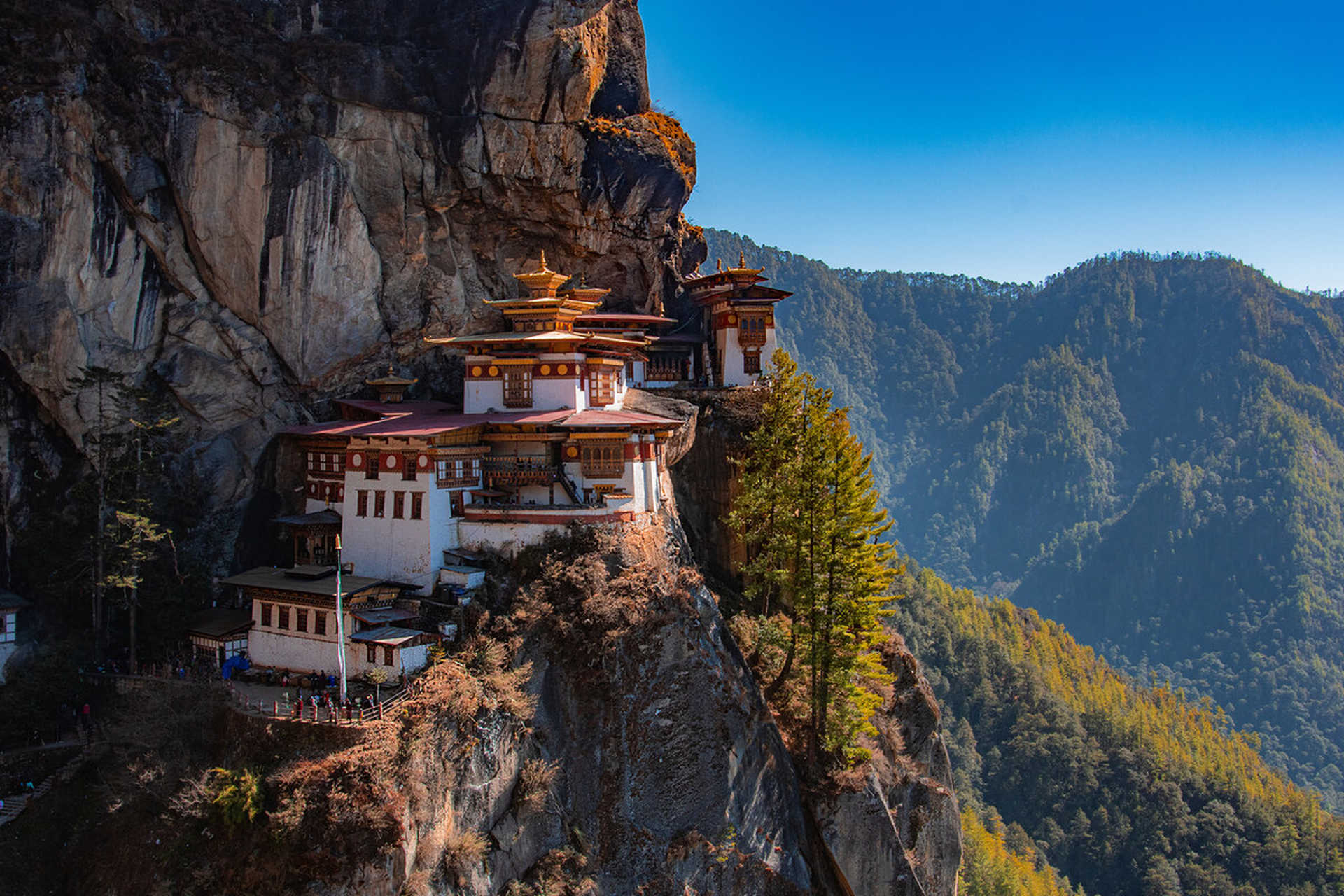Like Winnie the Pooh’s Tigger, High altitude trekking holidays are wonderful things. Not only do you get to hike through the most spectacular scenery in exotic locations around the world, you almost always have the opportunity to take in some cultural and historical highlights too. If you’re thinking of poddling off to Bhutan for some mountain trekking adventures (and you should be – you’re gonna love it!) then the Tiger’s Nest Monastery is one of these highlights and you’d be a fool – no offence – to miss it. Why? Read on and I’ll tell you everything you need to know about the Tiger’s Nest Monastery in Bhutan.

I know what you’re thinking. “Hang about; if there’s one thing I know about tigers, it’s that they don’t build nests. So what’s that name all about then”? To make sense of this, the first thing you need to get your head around is the monastery’s location. This extraordinary (and, I should add, exquisitely beautiful) Buddhist complex nestles precariously on the lip of a mountain cliff 700 metres above the ground and at an overall elevation of about 3,200 metres. Built in 1692, the monastery is said to be sited in the vicinity of a cave which, in the eighth century, was inhabited by the Tibetan Guru Padmasambhava. Still with me? Good.
Guru Padmasambhava is credited with introducing the Buddhist faith to Bhutan. The question is; how did he get from Tibet to a virtually inaccessible cave, way up a vertical mountainside in a remote part of Bhutan? Well, according to legend, the good Guru arrived on the back of a flying tiger (OK, a tigress if we’re being pedantic: it was a manifestation of the Tibetan princess/goddess Yeshe Tsogyal); thus this holy place earned itself the name ‘Tiger’s Nest’. Bet you’re glad you asked now, aren’t you?
The Tiger’s Nest today
Today the Tiger’s Nest is one of Bhutan’s most sacred holy sites, a national cultural icon and a place you’ll kick yourself for missing if you don’t head there during your time in Bhutan. The original complex was extensively damaged by fire in 1998 (an accident with a butter-lamp, apparently; hey! these things happen…) but was fully restored to its former magnificence by 2005. Architecturally gorgeous, the Tiger’s nest features four main temples and several outbuildings and dwellings, all interconnected by stairways carved into the rock of the mountainside.
Painted white, the smaller buildings have striking red roofs whilst the temples have pagoda-style roofs finished in gold; this makes the Tiger’s Nest unmistakable and a stand-out feature against the stark grey stone of the cliff face and forested peaks beyond. We kid you not - when you catch your first glimpse of this magical place from afar we guarantee that you’ll a) be absolutely wowed and b) get your camera out pretty darned sharpish.
How to get to the Tiger’s Nest Monastery in Bhutan
If you’ve read this far (well done you!) you’ll have established that the Tiger’s Nest Monastery is somewhere that you really ought to visit while in Bhutan. So what’s the skinny on getting there? The bad news is that, so far, we’ve been unable to find a reliable source of flying tigers to transport our guests (OK, to be honest, we haven’t looked that hard), but don’t panic; the alternative method – a challenging but enjoyable uphill hike – offers an equally amazing experience.
Several of the Bhutan treks run by Kandoo Adventures provide the opportunity to visit the Tiger’s Nest, which is located roughly 16km north of the town of Paro in the west of the kingdom. Including time spent at the monastery itself, you’re looking at a hike of between five and eight hours there and back. Not that I wish to nag, but remember that the trek to the Tiger’s Nest is at high altitude so the usual rules about acclimatising first and taking it steady apply here. At many times of day rushing up the mountain simply isn’t an option anyway; the route is inevitably popular and whilst there is no access for any kind of vehicle, donkeys are used to ferry less able visitors to and from the monastery. Note too that the place closes at 16:30 each afternoon.

The good news – apart from the fact that you’ll be undertaking a fabulously rewarding trek to an iconic destination – is that there are several ‘short cuts’ that take you away from the potentially crowded main path. Another plus is that there is a cafeteria about halfway along the route: not only is this a good place to grab some refreshment and get your breath back if necessary, it’s also a vantage point from which to gain some of the best views/snapshots of the Tiger’s Nest.
How tough is the trek to the Tiger’s Nest? Well, although the path is wide, it’s also a little steep in places and almost entirely uphill. If you’re relatively fit and have accounted for the reduced oxygen levels you’ll be fine. At a steady pace, you’ll likely reach the café halfway within one to two hours. From here the upward ascent continues, rewarding you with plenty more fantastic views both of the monastery and of the mountainous scenery that surrounds you. Eventually, you’ll reach a rock shelf that faces the Tiger’s Nest itself. Descend a steep stone stairway (nifty bit of alliteration there, for all you fans of stylistic literary devices) then climb up the other side and you’ve made it!
Tiger’s Nest Etiquette - do's and don'ts
Don’t forget that the Tiger’s Nest is a sacred and revered holy place. This means that shoes and backpacks must be left outside – don’t worry; they’ll be looked after – and photography is not permitted inside. But this is a small price to pay for the opportunity to visit one of the most special, spiritual and improbably-located monasteries on the planet. Take our advice: fill your boots with memories and photos of this magical experience because your trek to the Tiger’s Nest Monastery in Bhutan is an achievement that you’ll never want to forget.










